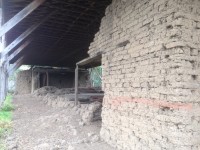Wifi isn’t all that it’s cut out to be. The past couple of weeks I have been adventuring through Guatemala and Belize with the promise of good wifi, the kind of wifi that gets columns back to the states. Unfortunately, wifi didn’t always find it’s way into the backroads, swamps and highlands that lay before the McKale family summer vacation. The first backroad took us to Tikal.
Tikal is one of the largest pre-Columbian Mayan archaeological sites in Latin America. It is located in the Peten region in the northeast portion of Guatemala. Tikal is a National Park and was declared a UNESCO World Heritage Site in 1979. It is tucked, almost hidden, in the middle of a jungle, a perfect setting for my four inquisitive boys, wife, niece and mother-in-law.
Tikal was the capital of a Mayan state that became one of the most powerful, interacting with the great and powerful Teotihuacan in Mexico. The monumental architecture dates back to the 4th century BC and reached its peak during the Classic Period from 200 to 900 AD. All Mayan cities, marked by cohesive military, economic and political structures, came to an abrupt end in 900 AD.
There are two eco-type lodges situated in the park and given our propensity for all animals of the jungle, I opted to stay in one for two nights. At the end of a long days hike exploring the ruins of Tikal, there is nothing better than a good jaunt through the jungle in search of tarantulas. My boys, of course, found many. My he-man Matthew decided to pick one up, after all, we have seen others do it on the big screen.
I watched, as any proud father would, as my fearless son gently picked up the large black spider in his hands to become one with nature. As soon as the spider was on board, it took off like a lightening bold up his arm and around his back. At this point Matthew started yelling “get it off, get it off”, but all we could do was laugh. The spider made its way around to his belly and made a bee-line for his face. The dancing and noises that came from my son were truly amazing. Once he flung the spider from his shirt, I told him this incidence would remain in the family, while crossing my two fingers behind my back.
Tikal is one of the best studied and therefore, best understood of all Mayan cities. In the Yucatec Maya language, Tikal means “at the waterhole”. This is an interesting name, for today, there is very little water at Tikal. The jungle rains soak the plants and easily travel down through the limestone subsurface. Today, because of a lack of water, there are very few mosquitos in the region.
Tikal was one of the largest cities in the Americas and all of its great architecture was built from limestone. Architecture in Tikal include temples over 230 feet high, large royal palaces, pyramids, residences, administrative buildings, platforms, inscribed monuments and reservoirs now empty. There are seven ball courts in which a game, somewhat similar to soccer was played. Limestone was quarried on-site and was used to create a plaster which was applied to the exterior of all the buildings.
Our second morning in Tikal began at 4:oo am. Our goal was to reach the highest pyramid by sunrise. Flashlights in hand, we made our way through the dark jungle, listening to a huge variety of animals wake with the rising sun. We made it to the top of the pyramid, however, a thick layer of clouds did not allow us to see the dawn of that particular morning. Instead we were enthralled by a chorus of Howler monkeys, whose low and loud guttural sounds echoed through the jungle.
Later in the day, my crew of biologists ventured out to turn stones. They came up with the largest toad the locals had ever seen, about the size of a soccer ball. We survived the jungles surrounding Tikal and now our adventure took us through the jungles of Belize and over to the Caribbean.


Be First to Comment